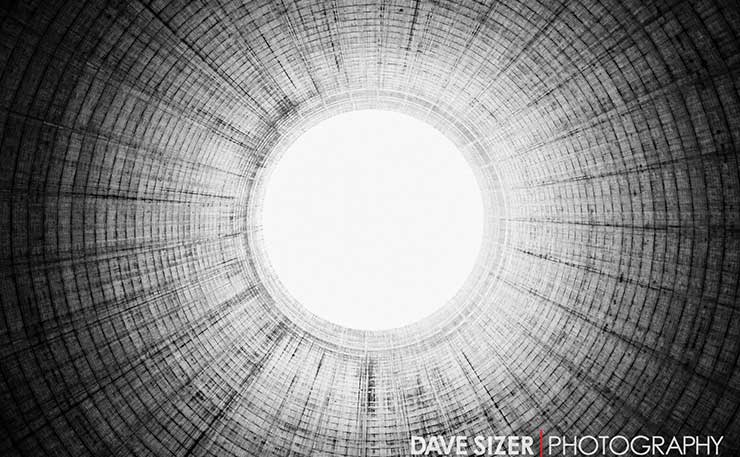Failed reactor projects have brought giant energy companies to their knees and even pro-nuclear lobbyists now acknowledge that the industry is in crisis, writes Jim Green from Friends of the Earth.
Four global nuclear industry giants ‒ French utilities Électricité de France (EDF) and Areva, US-based Westinghouse and Japanese conglomerate Toshiba ‒ face crippling debts and possible bankruptcy because of their investments in nuclear power.
The French government is selling assets so it can prop up its heavily indebted nuclear utilities. EDF plans to sell $13.8 billion of assets to rein in its $51.8 billion debt, and to sack up to 7,000 staff. Areva has accumulated losses of over $14 billion over the past five years.
French EPR reactors under construction in France and Finland are three times over budget ‒ the combined cost overruns for the two reactors amount to about $17.5 billion. Bloomberg noted in April 2015 that Areva’s EPR export ambitions are “in tatters“, and now Areva itself is in tatters.
A government-led rescue of the nuclear power industry may cost the French state as much as $14 billion, Reuters reported in January, and in addition to its “dire financial state, Areva is beset by technical, regulatory and legal problems”.
Meanwhile, Japanese industrial giant Toshiba would like to sell indebted, US-based nuclear subsidiary Westinghouse, but there are no buyers so Toshiba must instead sell profitable assets to cover its nuclear debts and avoid bankruptcy.
One site where these problems come together is Moorside in Cumbria, UK. A Toshiba/Engie consortium was planning to build three AP1000 reactors, but Toshiba wants to sell its stake in the consortium in the wake of Westinghouse’s massive losses from AP1000 construction projects in the US.
Engie reportedly wants to sell its stake in the Moorside consortium, and the French government has already sold part of its stake in Engie… to help prop up EDF and Areva!
Deck-chairs are being shuffled. Cumbrians will be glad to see the back of corruption-plagued Toshiba ‒ but corruption-plagued South Korean utility KEPCO might take its place.
Another site where these problems come together is Hinkley Point in the UK, where EDF has a contract to build two EPR reactors at an estimated cost (including finance) of $40 billion ($20 billion for each reactor). Industry literature is replete with references to ‘learning-by-doing’, but all EDF and Areva have learnt over the past decade is how to fuck things up ‒ in which case Hinkley Point could be the fuck-up that kills nuclear power in the UK.
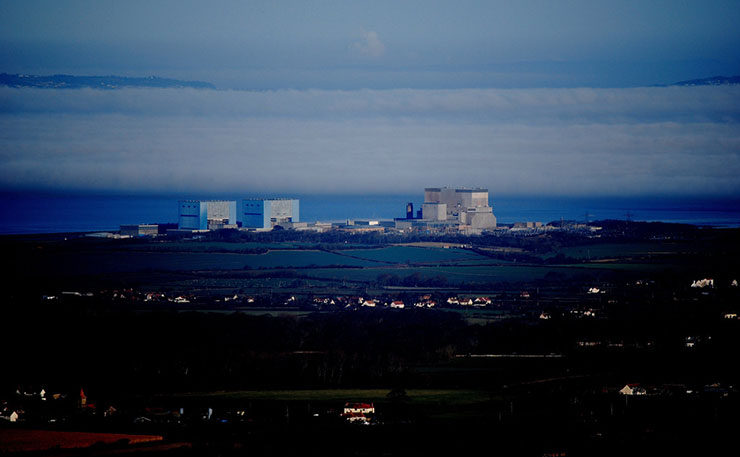
The French nuclear industry is in its “worst situation ever“, former EDF director Gérard Magnin said last November. He said: “A lot of people in EDF have known for a long time the EPR has no future – too sophisticated, too expensive – but they assume their commitments and try to save the face of France… Renewable energies are becoming competitive with fossil fuels and new nuclear, such as Hinkley Point, where EDF will try to build the most expensive reactors in the world and provide electricity at an unprecedented cost.”
EDF Vice President Mark Boillot may be preparing to jump ship ‒ he recently wrote an article saying that the centralised model of power production is dying, to be replaced by local renewables supplemented by batteries and intelligent management of supply and demand.
The Carbon Commentary Newsletter said: “In most jurisdictions Mr Boillot would have been asked to clear his desk. What will EDF do about one of its most senior people openly forecasting the end of the large power station as it tries to raise the ten billion euros necessary to pay for its share of Hinkley?”
Nuclear ‘dark ages’
The latest dramas occur against a backdrop of deep industry malaise, with the receding hope of even the slightest growth resting squarely on the shoulders of China.
A February 15 piece in the Financial Times noted: “Hopes of a nuclear renaissance have largely disappeared. For many suppliers, not least Toshiba, simply avoiding a nuclear dark ages would be achievement enough.”
Toshiba and Westinghouse are in deep trouble because of massive cost overruns building four AP1000 reactors in the US ‒ the combined overruns are about $14 billion and counting. The saga is detailed in Bloomberg pieces titled ‘Toshiba’s Nuclear Reactor Mess Winds Back to a Louisiana Swamp‘ and ‘Toshiba’s Record Fall Highlights U.S. Nuclear Cost Nightmare‘.
Toshiba said on February 14 that it expects to book an $8.2 billion write down on Westinghouse, on top of a $3 billion write down in April 2016. These losses exceed the $7.1 billion Toshiba paid when it bought a majority stake in Westinghouse in 2006.
Almost half of the reactors in the US have been operating for 40 years or more and are nearing retirement. Yet the four AP1000 reactors are the only ones under construction, so nuclear power is certain to continue its downward slide in the US.
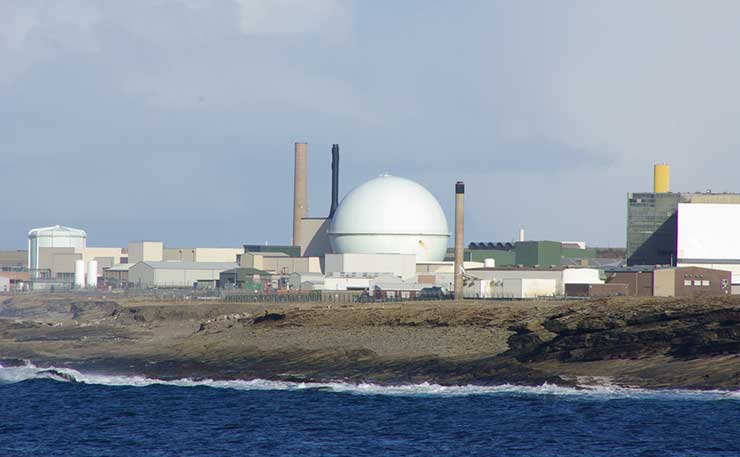
“There’s billions and billions of dollars at stake here,” said Gregory Jaczko, former head of the US Nuclear Regulatory Commission. “This could take down Toshiba and it certainly means the end of new nuclear construction in the US.”
Likewise, pro-nuclear commentator Dan Yurman notes that the Toshiba/Westinghouse AP1000 fiasco “apparently ends the so-called nuclear renaissance in the US for full size reactors. During 2007-2010 there were more than two dozen applications expected for new reactors, but now only a few licenses that have been completed and they do not have any links to near term plans to build the units”.
Bankruptcy looms for Toshiba, with the banks circling and the risk heightened by the likelihood of further delays and cost overruns with the four partially-built AP1000 reactors in the US, and unresolved litigation over those projects. Toshiba says it would likely sell Westinghouse if that was an option ‒ but there is no prospect of a buyer. The nuclear unit is, as Bloomberg noted, “too much of a mess” to sell. And since that isn’t an option, Toshiba must sell profitable businesses instead to stave off bankruptcy.
Utilities in crisis everywhere
Toshiba’s demise would not greatly concern the nuclear industry if it was an isolated case, but it is symptomatic of industry-wide problems. Nick Butler from Kings College London wrote in a Financial Times online post: “Toshiba is just one company in the global nuclear industry, but its current problems are symptomatic of the difficulties facing all the private enterprises in the sector. Civil nuclear power involves huge up-front capital costs, very long pay-back periods and high risks that are compounded by a lack of experience, especially in managing nuclear construction projects after a long period with few new plants. For all those reasons, private investors avoid the sector and prefer to put their money where they see faster and safer returns.”
Nuclear utilities around the world are in deep trouble ‒ their problems were summarised in the July 2016 World Nuclear Industry Status Report:
“Many of the traditional nuclear and fossil fuel based utilities are struggling with a dramatic plunge in wholesale power prices, a shrinking client base, declining power consumption, high debt loads, increasing production costs at ageing facilities, and stiff competition, especially from renewables.
- In Europe, energy giants EDF, Engie (France), E.ON, RWE (Germany) and Vattenfall (Sweden), as well as utilities TVO (Finland) and CEZ (Czech Republic), have all been downgraded by credit rating agencies over the past year. All of the utilities registered severe losses on the stock market.
- French utility AREVA has accumulated €10 billion (US$10.9 billion) in losses over the past five years. Share value 95% below 2007 peak value. Standard & Poor’s downgraded AREVA shares to BB+ (‘junk’) in November 2014 and again to BB- in March 2015. …
- The AREVA rescue scheme could turn out to be highly problematic for EDF as its risk profile expands. EDF struggles with US$41.5 billion debt, downgraded by S&P, shares lost over half of their value in less than a year and 87% compared to their peak value in 2007.
- RWE shares went down by 54% in 2015.
- In Asia, the share value of the largest Japanese utilities TEPCO and Kansai was wiped out in the aftermath of the Fukushima disaster and never recovered. Chinese utility CGN (EDF partner for Hinkley Point C), listed on the Hong Kong stock exchange since December 2014, has lost 60% of its share value since June 2015. The only exception to this trend is the Korean utility KEPCO that operates as a virtual monopoly in a regulated market.
- In the US, the largest nuclear operator Exelon has lost about 60% of its share value compared to its peak value in 2008.”
‘The EU, the US and Japan are busy committing nuclear suicide’
The nuclear industry and its supporters have responded in varying ways to the crises facing nuclear utilities and the industry’s broader malaise. Some opt for head-in-the-sand delusion and denial. Others are extremely pessimistic about the industry’s future. Others paint a picture of serious but surmountable problems.
There is agreement that the nuclear industries in the US, Japan and the EU ‒ in particular their nuclear export industries ‒ are in deep trouble. A February 2017 EnergyPostWeekly article says “the EU, the US and Japan are busy committing nuclear suicide.” Michael Shellenberger from the pro-nuclear Breakthrough Institute notes that: “Nations are unlikely to buy nuclear from nations like the US, France and Japan that are closing (or not opening) their nuclear power plants.”
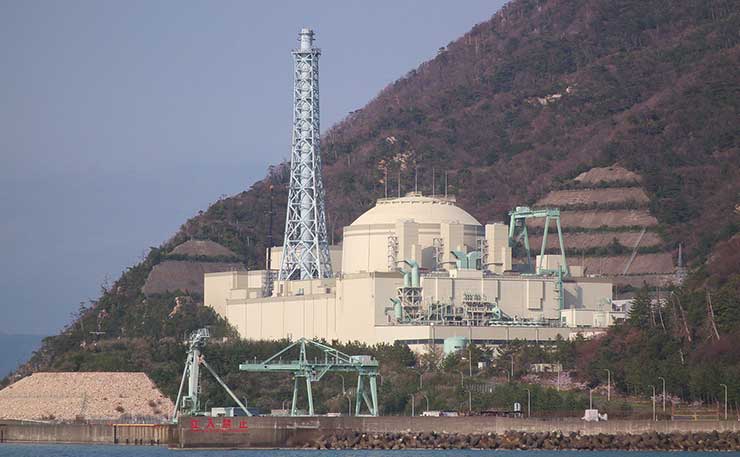
Shellenberger said: “From now on, there are only three major players in the global nuclear power plant market: Korea, China and Russia. The US, the EU and Japan are just out of the game. France could get back in, but they are not competitive today.”
That’s good news for the nuclear industries in South Korea, China and Russia. But they might end up squabbling over scraps ‒ there were just three reactor construction starts last year around the world.
‘Rapidly accelerating crisis’
Shellenberger has recently written cataclysmic assessments of nuclear power’s “rapidly accelerating crisis” and a “crisis that threatens the death of nuclear energy in the West“.
Likewise, Dan Yurman says that a “sense of panic is emerging globally” as Toshiba exits the reactor construction industry. He adds: “After nine years of writing about the global nuclear industry, these developments make for an unusually grim outlook. It’s a very big rock hitting the pond. Toshiba’s self-inflicted wounds will result in long lasting challenges to the future of the global nuclear energy industry. Worse, it comes on top of the French government having to restructure and recapitalize Areva, its state-owned nuclear power corporation, so that it can complete two 1650 MW EPR reactors that are under construction in Europe and to begin work on the Hinkley project the UK.”
Ironically, Westinghouse, the villain in Toshiba’s demise, may have made the best strategic decision of all the nuclear utilities. In 2014, Westinghouse announced plans to expand and hopefully triple its nuclear decommissioning business. Decommissioning is undoubtedly a growth area.
The average age of the global reactor fleet now stands at 30 years. The World Nuclear Association anticipates 132 reactor shut-downs by 2035. The International Energy Agency anticipates a “wave of retirements of ageing nuclear reactors” and an “unprecedented rate of decommissioning” ‒ almost 200 shut-downs between 2014 and 2040. Up to 200 reactors are set to go offline in the next two decades according to a recent Nuclear Energy Insider article.
A future for nuclear power?
A fundamental difficulty for the nuclear industry is that the imperatives for greater safety and reduced costs push in opposite directions. Mark Cooper, from the Institute for Energy and the Environment at Vermont Law School, recently told the New York Times: “Nuclear safety always undermines nuclear economics. Inherently, it’s a technology whose time never comes.”
Retreating from post-Fukushima efforts to strengthen safety standards inevitably increases the risk of another Chernobyl- or Fukushima-scale catastrophe. Leaving aside the disputed health effects from those disasters, the economic costs associated with both disasters was in the ball-park of US$500 billion, and both had devastating impacts on public acceptance of nuclear power.
Yet a retreat from post-Fukushima efforts to strengthen safety standards seems to be where the industry and its enthusiasts are heading in their efforts to curb nuclear power’s astonishing cost increases and overruns.
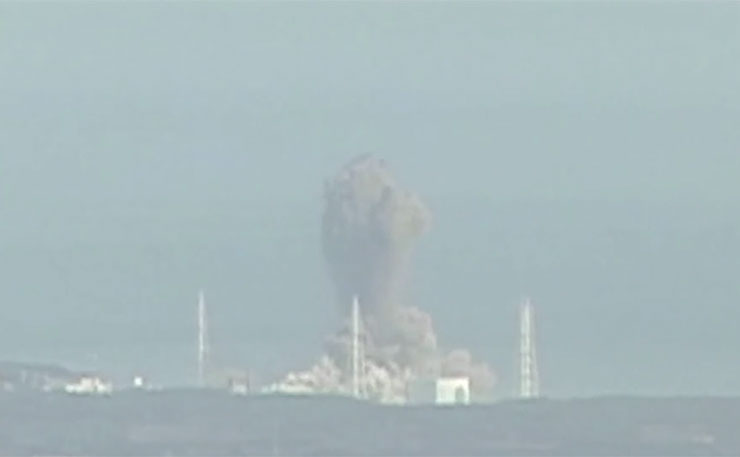
Proposals include weakening safety regulations; abandoning Generation 3/3+ reactors in favour of Generation 2 reactor types (or redefining Generation 2 reactor types as Generation 3/3+); and overturning the established scientific orthodoxy that even the smallest doses of ionizing radiation can cause morbidity and mortality.
How to convince the public to accept reduced nuclear safety standards even as 80,000 people remain displaced because of the Fukushima disaster and clean-up and compensation cost estimates double then double again? In a word: spin.
Shellenberger, for example, wants “higher social acceptance” but he also wants weakened safety regulations such as the repeal of a US Nuclear Regulatory Commission rule designed to strengthen reactors against aircraft strikes. He squares the circle with spin and sophistry, claiming (without evidence) that the NRC’s Aircraft Impact Rule “would not improve safety” and claiming (without evidence) that the NRC “caved in to demands” from anti-nuclear groups to establish the rule.
Australia’s nuclear debate
Shellenberger recently noted that: “Radical breaks from past designs sometimes work in industries that require little up-front capital, like Internet companies. It’s now clear that they are deadly when it comes to nuclear.”
Those comments refer to APR1000 and EPR reactors, which are just modified versions of long-established, conventional reactor technology. The likelihood of genuinely radical Generation IV concepts coming to the rescue is minuscule in circumstances where the inability to build a handful of conventional reactors on-time and on-budget has brought industry giants ‒ with decades of experience and tens of thousands of employees ‒ to their knees.
Yet Australia’s dwindling but determined group of nuclear lobbyists continue to press the case for Australia to take the lead developing Generation IV reactor types. So Australia ‒ a country with virtually no relevant expertise and even less experience ‒ should take the lead developing Generation IV reactors despite the fact that four global giants face crippling debts due to cost overruns building a handful of conventional reactors?
That proposition is beyond stupid and it was completely rejected by the SA Nuclear Fuel Cycle Royal Commission last year.
The Royal Commission said: “[A]dvanced fast reactors and other innovative reactor designs are unlikely to be feasible or viable in the foreseeable future. The development of such a first-of-a-kind project in South Australia would have high commercial and technical risk. Although prototype and demonstration reactors are operating, there is no licensed, commercially proven design. Development to that point would require substantial capital investment. Moreover, electricity generated from such reactors has not been demonstrated to be cost competitive with current light water reactor designs.”
On conventional nuclear power, the Royal Commission concluded that “on the present estimate of costs and under current market arrangements, nuclear power would not be commercially viable to supply baseload electricity to the South Australian subregion of the NEM from 2030 (being the earliest date for its possible introduction)”.
The dwindling nuclear lobby will continue with their beyond-stupid promotion of Generation IV reactors, and they’ll continue peddling misinformation about renewables, but there’s no longer any reason why the rest of us should pay any attention.
Donate To New Matilda
New Matilda is a small, independent media outlet. We survive through reader contributions, and never losing a lawsuit. If you got something from this article, giving something back helps us to continue speaking truth to power. Every little bit counts.

